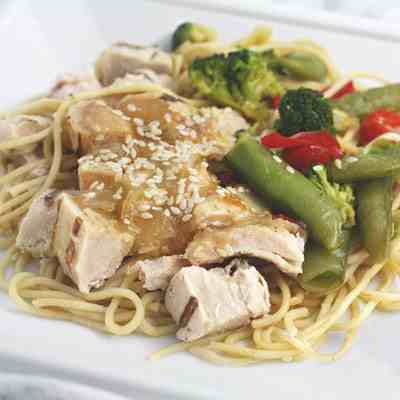Milk Matters: Dairy Milk Just One of Many Options Available

Remember way back to the 2018 Olympic Winter Games?
If you watched any of the media covered during the 18-day run featuring the world’s best winter-sport athletes, you probably saw one of the Milk Life commercials.
Here’s an example. In one of the 60 second spots, Maddie Bowman carves out her career as a halfpipe skier from childhood to the Olympic Games.
And then there’s a nod to milk as a nutritional force behind every Olympic athlete that says: 9 out of 10 U.S. Olympians grew up drinking milk.
But take a trip to the grocery store, and you’ll soon discover the traditional dairy or cow’s milk being promoted in the Milk Life commercial, isn’t the only milk option available anymore.
In fact, with a growing interest in organic foods, non-dairy options, food allergies, and vegetarian diets, there's at least seven non-dairy milks you can drink, in addition to dairy milk. View our list below and learn about some of the different types of milk.
1. Dairy milk. Traditional cow’s milk.
This is what Milk Life is banking on in the Olympics commercials. It’s available as whole milk, 2 percent, 1 percent, and skim milk, differentiated by levels of saturated fat. Organic dairy milk is also an option, but expect to pay a premium.

2. Soy milk.
In a recent study published in the Journal of Food Science and Technology, soy milk won out over four other non-dairy milk options because it's high in protein. Soy-based milk and food products also have the biggest following in the consumer market compared to other emerging non-dairy options.

3. Pea protein milk.
You guessed it. It’s made from peas. Once they’re harvested and turned into flour, it’s used to make milk. And this milk, is actually a bit higher in protein than cow’s milk by a couple of grams at about 10 g of protein in an 8 oz glass.

4. Rice milk.
It’s been around for a long time, and one type of milk many people turn to who are allergic to dairy or lactose intolerant. The downside, it’s lower in nutritional value than cow’s milk.
5. Oat milk.
Maybe it’s a new way to have oatmeal with milk. Oat milk is made from oats, contains a higher amount of fiber than dairy milk, and may even help control cholesterol. For best results, have oatmeal with oat milk.
6. Almond milk.
Here’s another player in the non-dairy milk line-up that’s managed to capture a fair share of consumer interest. It’s marketing message is pretty simple. It’s milk made from a nut, so it contains healthy fats, along with other nutritional benefits. But not suitable for those with a nut allergy.

7. Coconut milk.
Coconut milk is edging it’s way into competing with soy milk and almond milk, but it’s not quite there yet. It’s got a bad rap for containing higher amounts of saturated fat, but it’s still a healthy non-dairy option.

8. Peanut milk.
Here’s another non-dairy milk trying to make its way to cereal bowls at the breakfast table. Peanut milk. Manufacturers are making a splash by explaining the production process. A cup of nut milk is made from 31 peanuts, which is significantly more nuts used to produce a cup of almond milk.
The milk you drink really comes down to a personal preference. The dairy options have dominated the marketing for decades. But non-dairy options are gaining ground. If you do go with non-dairy options, watch out for added sugars, settled ingredients, and other additives, used in the manufacturing process.
How about a healthy meal to go with a glass of milk? Check out the menu. We’ve got something for everyone.



 INSURANCE CUSTOMERS CLICK HERE!
INSURANCE CUSTOMERS CLICK HERE!
